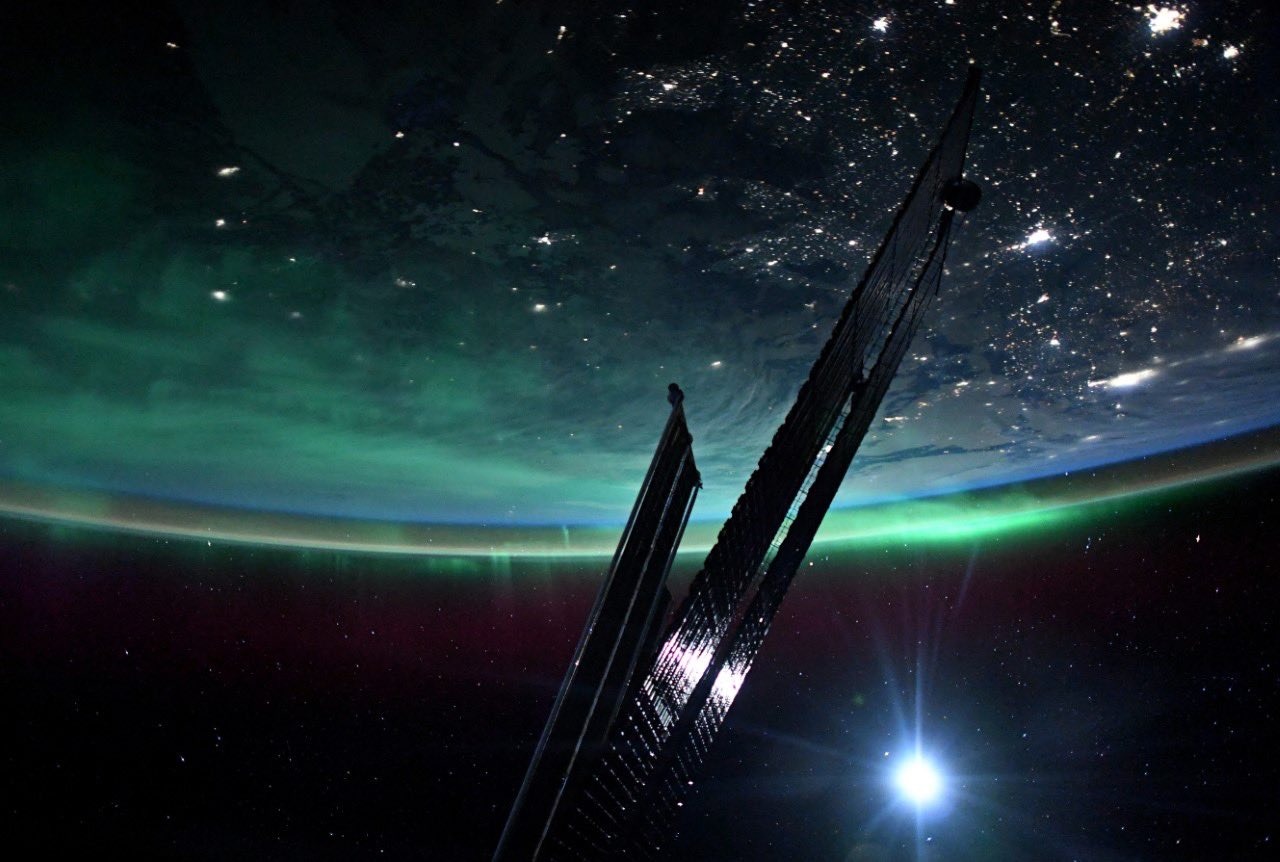A geomagnetic storm caused by a series of recent explosive events on the Sun has brought astounding auroras to Earth in recent days. The force of the solar wind was so strong that it led to a bright aurora over Europe and the USA.

Astronauts on the International Space Station (ISS) at an altitude of 400 km above our planet also enjoyed an amazing light show. Astronaut Josh Cassada shared a stunning picture that he managed to take from the orbital outpost.
“Absolutely unreal,” Cassada commented on Twitter next to the image, which showed not only the magnificent green color of the aurora borealis, but also city lights on Earth and part of the space station.
The aurora occurs when solar wind particles collide with gases in the Earth’s atmosphere. As a result of collisions, colorful lighting effects often occur in the sky. From the surface, the natural phenomenon is usually best observed in the north in places such as Alaska, Canada, Iceland, Greenland, Norway, Sweden and Finland. On the other side of the Earth, Tasmania and New Zealand are usually the best places to observe the aurora borealis.
Wow, awesome view! I caught @Space_Station passing overhead (24 sec in) while making a timelapse of our auroral action pic.twitter.com/pN0GZMdSnO
— Joel Weatherly (@JK_Weatherly) February 28, 2023
But in recent days, especially powerful solar flares have caused the aurora to stretch much further south than usual, which has given celestial observers living in these places a rare chance to see a light show without having to travel to the far north or south.
As for the ISS astronauts, their enviable location means that the aurora borealis is not unusual for them. They observe several auroras during six-month missions in orbit. For example, Cassada is probably not the first to see Aurora from space, since he arrived on the ISS five months ago as part of the SpaceX Crew-5 team. But judging by the comment in his post, the last sight seems to have touched him the most.
Earlier we reported on how the pilot turned the plane around for a better viewing of the aurora by passengers.
Follow us on Twitter to get the most interesting space news in time
https://twitter.com/ust_magazine

